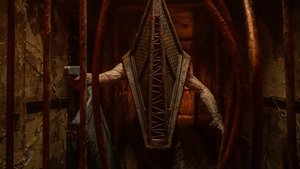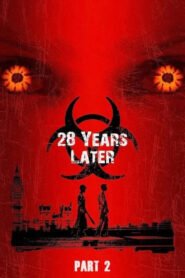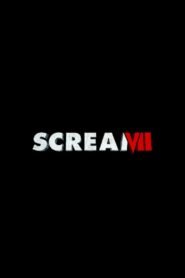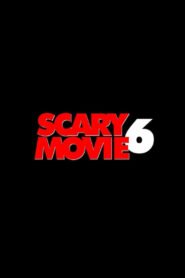
Video Sources 5 Views Report Error
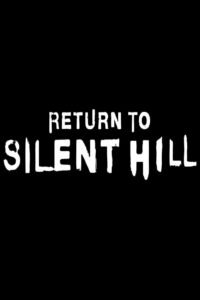
Synopsis
Few video game franchises have haunted the collective minds of fans like Silent Hill. Known for its disturbing imagery, psychological depth, and nerve-wracking suspense, the franchise has defined survival horror for over two decades. Now, in 2025, the nightmare returns to the big screen with Return to Silent Hill—a bold, terrifying cinematic adaptation based on the critically acclaimed game Silent Hill 2.
Directed by Christophe Gans, who helmed the 2006 Silent Hill movie, Return to Silent Hill aims to recapture the eerie mystique and emotional torment that made the original games unforgettable. Unlike conventional horror films reliant on jump scares, this one dives deeper into human guilt, trauma, and the decaying subconscious. It’s not just about fear—it’s about facing your own darkness.
The Story: A Descent into Guilt and Madness
At the heart of Return to Silent Hill is James Sunderland, a man tormented by the death of his wife, Mary. After receiving a mysterious letter from her—despite her passing years ago—James returns to the fog-covered town of Silent Hill, searching for answers.
What he finds instead is a twisted reality that reflects his own inner torment. Silent Hill is no ordinary town. It’s a cursed place, where the boundary between the real and the psychological dissolves. As James searches for the truth, he confronts grotesque creatures, fractured memories, and a terrifying entity known as Pyramid Head—a monstrous figure born from James’s own guilt.
The story isn’t about saving the world. It’s about confronting the self—and what lies buried within.
James Sunderland: A Different Kind of Hero
Most horror protagonists run from monsters. James walks toward them, drawn by a desire to understand, or perhaps atone. He is not a perfect man—he’s broken, flawed, and haunted by a decision he can’t undo.
The emotional core of the film lies in James’s internal struggle. His pain is Silent Hill’s fuel. As he descends deeper into the nightmare, viewers are drawn into a journey that’s as emotionally harrowing as it is visually terrifying. This is a character-driven horror, something rare in modern cinema.
The actor cast as James brings a grounded performance—vulnerable yet determined. Expect a portrayal that leans into the psychological torment rather than action heroism.
Silent Hill as a Living Nightmare
The town of Silent Hill is more than just a backdrop. It’s a character of its own—shifting, moaning, and revealing the darkest corners of the human soul. The fog, the ash rain, the flickering lights, and rusted walls—all contribute to a sense of suffocation and unease.
In Return to Silent Hill, the visuals are meticulously crafted to reflect the decaying psyche of the main character. Locations change without warning. Familiar places morph into hellscapes. There’s no safe place. There’s no true escape.
The filmmakers have returned to practical effects, fog machines, and set design reminiscent of the PS2-era visual tone. Combined with modern camera work and atmospheric sound, the town breathes again—this time with even more menace.
The Creatures: From Pyramid Head to Psychological Terrors
One of the most iconic elements of the Silent Hill universe is its creatures. But unlike zombies or vampires, these are manifestations of guilt, grief, and punishment.
- Pyramid Head, the executioner, is perhaps the most recognizable monster in horror gaming. With his massive blade and ominous presence, he’s more than a brute—he’s a symbol of judgment.
- The Nurses, twitching and faceless, represent warped sexuality and trauma.
- Abstract Daddy, Lying Figures, and other grotesque entities return, each tied directly to the emotional baggage James carries.
The film does not rely on gore alone. Each monster encounter is laden with meaning, challenging the viewer to interpret what they represent—both to James and themselves.
Christophe Gans’ Return: A Director with Vision
Director Christophe Gans returns to helm this long-awaited sequel. His 2006 adaptation of Silent Hill is still praised for its visual faithfulness and moody atmosphere. With Return to Silent Hill, Gans promises a more personal, darker, and emotionally resonant story.
This isn’t a direct sequel to the first movie—it’s a reimagining that focuses on the story of Silent Hill 2, arguably the most beloved game in the series. Gans’s direction emphasizes storytelling over spectacle, horror over cheap thrills.
He has described the project as “an adult love story wrapped in horror,” which aligns with the game’s original intention.
A Psychological Horror, Not Just Supernatural
What sets Return to Silent Hill apart from most horror films is its psychological complexity. This isn’t about ghosts or demons chasing you in the dark. It’s about what’s inside your head—the things you regret, the pain you bury, and the lies you tell yourself.
The town forces James—and by extension, the viewer—to confront these things. The horror comes not just from the monsters on screen, but from the realization that we all have Silent Hills inside us.
Themes That Resonate
- Guilt and Redemption: James’s journey is one of seeking redemption, but can you be forgiven for the unforgivable?
- Mental Illness: The film doesn’t shy away from portraying trauma, depression, and psychological collapse.
- Love and Loss: Mary’s absence is a wound that festers. The film explores how love can become twisted when mixed with guilt.
These aren’t just horror tropes. They’re universal themes, delivered through a hauntingly artistic lens.
Expectations and Reception
Fan anticipation is incredibly high. After years of lackluster horror reboots and uninspired adaptations, Return to Silent Hill feels like a return to form—both for the franchise and the genre.
Test audiences and early festival reviews suggest the film delivers what it promises: a slow-burn, emotionally charged horror experience that stays true to the source material while standing on its own as a cinematic masterpiece.
Final Thoughts
Return to Silent Hill is not just a movie—it’s an experience. It taps into the deepest parts of the human condition and dares to make the viewer uncomfortable. It’s atmospheric, it’s tragic, and it’s beautifully horrifying.
For fans of the original games, it’s a long-awaited tribute. For newcomers, it’s a gateway into one of the most emotionally complex horror universes ever created.
When the fog rolls in and the sirens scream, one question will remain: Are you ready to return?
FAQs
1. Is Return to Silent Hill connected to the previous films?
It shares DNA with the 2006 film but stands on its own. It reboots the timeline by adapting Silent Hill 2, not continuing the earlier narrative.
2. Who is the main character?
James Sunderland, a man searching for his dead wife after receiving a mysterious letter from her.
3. Will Pyramid Head be in the movie?
Yes. Pyramid Head plays a crucial symbolic role, just like in the original game.
4. Is this movie scary?
Absolutely—but not in a typical way. It focuses on psychological horror and emotional terror rather than jump scares.
5. Do you need to play the game to understand the movie?
No. The film is made for both longtime fans and newcomers. It tells a complete, standalone story.
Original title Return to Silent Hill
IMDb Rating n/A n/A votes
Director
Director
Cast
James Sunderland
Mary Sunderland / Maria
Laura
Eddie Dombrowski
Kaitlyn
Mitzy
Bouncer
Attending Physician
Dara
The homeless man

